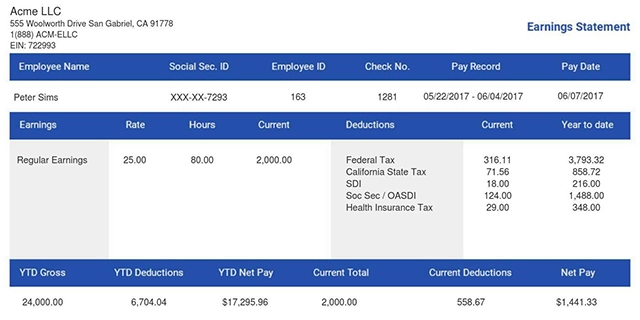A Guide To Digital Marketing Trends To Take Advantage Of In 2022
Introduction
With 2022 upon us, it’s time to look at the world of digital marketing and the trends that we can expect in the coming years. By seizing on emerging trends right now, you can find success in your future digital marketing efforts, no matter what business you’re trying to promote.
Whether you’re familiar with the space or not, this guide has you covered. Below we have explained digital marketing and how it is used today, then we have a detailed breakdown of the twelve foremost trends that you can start capitalizing on today.
Don’t just take our word for it, we have backed up each trend with links that show our information to be accurate. They also provide additional reading on certain topics for those who want to dive even deeper into online marketing concepts and the digital climate as it stands today.
We have a lot to cover together, so let’s get started.
What Is Digital Marketing?
Everybody knows what digital marketing is, even if you’re not familiar with the term. That’s because it has become the most popular and effective means of advertising over the last decade.
For those that aren’t clued into digital marketing, here’s a brief rundown of what it is and its most important principles. Understanding these will help you with the marketing trends that we have explored throughout this guide.
In short, any marketing that is facilitated through electronic devices connected to the Internet is digital marketing. That’s why it is often called Internet marketing or online marketing too. In case you haven’t noticed, smartphones and the rise of social media have placed digital marketing devices into the hands of billions of people worldwide.
Digital marketing uses multiple digital channels to deliver business-related media, typically offering products or services and gathering brand loyalty. Here are some of the main digital marketing channels:
-
Business & Content Sharing Websites
-
Social Media Platforms
-
Search Engines & Search Engine Optimization
-
Email Campaigns
Through these popular mediums, a business can put their written words, spoken words, and other forms of audiovisual content in front of millions of potential customers.
It allows marketers to access more people than ever before and, unlike blanket TV and radio ads, it enables them to target certain demographics and market to the people who will appreciate their business. It is also much easier to track your analytics, so you can figure out if your strategies are working, then choose to double down or return to the drawing board depending on the results.
Personalization and automation are also huge advantages of digital marketing. Algorithms are at play all over the Internet, especially with search engines and social media platforms. They enable customers to personalize the advertisements that are put in front of them, which can be automated with no extra effort from the businesses behind those ads.
Also read: What is marketing in business?

Digital Marketing Trends For 2022
Now that we know a little more about digital marketing and what it looks like nowadays, we can go into more detail about the current digital marketing trends. These are pre-existing and emerging trends that we expect to become more important in 2022 and the 2020s in general.
Needless to say, every prediction should come with a grain of salt, but we have referenced supporting material where necessary.
Also read: What Tools Can You Use to Streamline Your Business Operations?
1. Email Is Still Important
Over the last two decades, throughout the rapid development of social media, messaging apps, and smartphones, many thought the inbox would be dead by now. Instead, email is still going strong and is only getting stronger.
In fact, emails are used to create accounts on social media and other apps, making them the hub of many people’s online activities. They are necessary for a lot of the world’s most popular services.
The first big advantage of email is privacy. If the privacy of your emails were compromised, all of your accounts across the entire Internet would be potentially exposed. Fortunately, email service providers keep up to date with the latest tweaks, hacks, and encryption technology to make sure that your old inbox remains impenetrable so long as you don’t click any suspicious links.
Email also has those two great benefits that digital marketing itself has – those being automation and personalization for the user. These eliminate the tedium of responding to every email as certain services can dovetail with your inbox, like AMP emails for example. With AMP email technology, purchase buttons and other clickables can be placed in an email and interacted with, all without leaving the email tab.
When you run a business, whether it’s from your living room or office space, building an email list is still ideal for gathering interested clients and effectively marketing to them. We don’t expect this to change in the foreseeable future as they have effectively become a signature that verifies all of your other accounts online.
2. Feedback Is Now Instant
Along with many of the other benefits of the Internet and digital marketing, feedback is now more instant than it has ever been. This is invaluable for marketers and campaign managers, who would have to operate on hindsight in the past. While the data points that marketers can use are slowly being stripped away (more on that later on in this guide) they can see pretty much instantly if the content falls flat.
For every corner of digital marketing, there are clear metrics that can be followed. For example:
-
The source of traffic and how they arrived at your website(s).
-
The pages on websites and other digital apps that are getting the most traffic.
-
Likewise, bounce rate metrics also show where people click away from pages.
-
Social media metrics that can show likes and shares for business news online.
-
The average session length can be used to estimate a user’s likelihood of returning to a page/service.
-
The all-important conversion rate shows digital marketers how many visitors interact with key buttons and functions on the site.
With all of these metrics and more at the hands of digital marketers, brands will start to focus on foresight instead. The decade will be based around strategizing, modeling, and trying to gain foresight on the success of campaigns before they even start.
Of course, anybody who has been on the Internet for long enough knows that it is sometimes unpredictable, so success will vary and marketers will still make costly and humorous mistakes in gauging the attitudes of online customers. Even then, instant feedback allows brands to recalibrate and recover their image at breakneck speeds.
Also read: How to Create an Employee Compensation Plan that is Effective

3. Loyalty Programs Are Dying
It seems that the Internet and the vast array of services it provides have changed brand loyalty. Brand loyalty and the programs that enforce it aren’t as effective anymore, with people instead preferring paid subscriptions, memberships, and community interactions. If a customer likes the content and other things they get out of the service, they are more likely to part with their money to support it, without having any loyalty to the brand itself.
This shouldn’t be a surprise in the age of streaming services, social media, and crowdfunding platforms. People subscribe to Netflix and the other big services, dipping out when nothing is interesting for them. Likewise, sites like Patreon allow fans and interested parties to fund smaller-scale creators and companies. Then sites like Facebook are rife with communities built around shared experiences, fandom, and of course, businesses.
Offering reward points to be spent with a brand isn’t enough anymore – instead, marketers need to show that the business offers a product, service, or experience worth subscribing to. Naturally, this is more important when you’re expecting them to pay for the privilege, so it needs to be content, goods, or a service that is actually valuable and appealing to your base.
4. More Specific Discounts & Benefits
Following the last point, the increase in personalization in digital marketing advertising means businesses can offer tailored discounts or benefits based on the consumer behaviors of their audience. This means that businesses can keep prices up while prioritizing the existing customer base that they have instead of bending prices to get mainstream appeal. With the Internet, even the most niche audiences can be marketed to at the click of a button.
More targeted advertising allows marketers to find interest in consumer bases without having to compromise with steep discounts across a blanket of products/services. We predict that these kinds of discounts will become a thing of the past as bonuses and benefits are reserved for those who already pay fees or are part of a business-related community.
For example, it’s much more likely that online businesses offer smaller discounts to those who follow their online accounts instead of telling a random netizen that they have a discount, which often falls flat in their spam folder.
This has been a priority for businesses for a while when they offer a discount – where they want customers to do some legwork and meet the business halfway if they want the benefits. With more data points in digital marketing, it’s possible to divine which aspects of the buyer experience are important for your audience, like free shipping or specific in-store environments, and they can be leveraged as a membership benefit instead.
Of course, this puts more focus on the content yet again. If digital marketers don’t use compelling materials to attract a customer base then it can be harder to get off the ground. In those cases, more generalized, blanket discounts that most customers can use still have a place in the current market.
Also read: What are the easiest business processes to automate right now?

5. Data Is More Protected
Over the last five or so years, ever since the GDPR passed in the European Union, our data has become more and more protected. While it’s an EU legislation, it’s the strictest data protection law in the world and applies worldwide through its online implementation. Every time you need to confirm cookies and other data trackers on-site, you’re witnessing the GDPR at work.
While everybody wants their data to be safe, it may cause a problem for digital marketers in the future. The so-called war on data will likely escalate before it cools down, meaning marketers are going to lose more data points that they may have relied upon in the past. For some, this will make their jobs harder but not impossible.
This will lead to first-party data becoming even more important. Marketers will scramble to gather as much of this data as possible when the hammer falls, so you can get ahead of the competition by focusing on first-party data right now before it becomes a necessity.
There’s no telling if things will move in the opposite direction as the 2020s progress, where data becomes more free-flowing across the Internet and emerging applications of it in things like the metaverse. We have more information on metaverse technology and some of the digital marketing ramifications of this near the end of this guide. What we do know is that, as of 2022, marketers will need to adapt to work with fewer data points.
Also read: Use A Customised Invoice For Your Business
6. Interactive/Video Content Becomes More Important
Three main trends are developing in digital content. First, the less important one, which is longer-form informational content that is both readable and shareable is becoming popular on web blogs. If your business creates or engages with written content online, long blogs and guides are doing well at the moment, but it is always context-specific. Not every business can or should produce copious amounts of written content, especially if the engagement isn’t there.
Next, interactive content is on the rise. This isn’t surprising. As businesses make the move to digital, there are pre-existing, gamified models from videogames and social media that know how to encourage engagement. It makes sense that digital marketers will leverage these to their advantage.
One effective approach is to embed TikTok video on website platforms, creating visually rich and engaging user experiences.
The buyer is more independent than they have ever been. Catering to this through interactive content that puts the ball in their court can be a great way to engage. It also enables them to self-select the products and services they are interested in. In many fast-food chains across the country, touchscreen order kiosks are in use, and the same idea can be applied to digital marketing material too.
The third type of content is video content and other visual mediums. They catch people’s attention much better than a wall of text and they are ubiquitous, appearing everywhere on social media feeds and streaming service menus. The use of touchscreens is even being used to deliver interactive and visual content to retail stores.
Producing video can be a challenge for smaller businesses but it’s only going to become more affordable as time goes by. Even then, care should be taken to avoid producing bad video content that drives people away or gives brands a negative reputation. You can’t just throw videos out there and hope for the best, however, you’ll need a plan and a realistic attitude towards content creation.

7. Real-World Advertising Becomes More Effective
With so much digitization going on in every aspect of our lives, marketers mustn’t forget that the real world still exists. While this isn’t the primary domain of the digital marketer, companies should remember that direct mail and postcards are still an option. Sending direct mail and other physical media can cut through the digital noise and better reach customers. If your inbox is full but your mailbox is empty, you’re going to notice something through the letterbox more than an email.
If location and other geography-based demographics are important to your business, then this can be an invaluable way of reaching consumers. The more advertising content and the goods on offer themselves become more digital, the more physical advertising attempts will stand out and be appreciated. It will seem like the business is making more of an effort to get in touch with their customers.
There’s also a financial argument for using some physical media alongside digital. As digital becomes the norm, the expenses associated with digital advertising will increase. For some businesses, using postcards and other posted alternatives can then be a viable way to cut costs and reap the forgotten benefits of through-the-letterbox advertising.
8. Every Brand Needs A Story
As the digital marketing space develops, it’s becoming clearer that narrative is everything. Whether it’s because of the platform that the Internet provides (and the online communities that businesses need to engage in) or something else, it helps if a brand has a story. This is something that has been known for a while but, with the rise of activist consumers, many people want to see more than a money-making business.
A common pitfall here is that the brands focus too much on themselves and their own brand story. While it helps for a business to have a story, a place that they came from, and a history to brag about, you also need to tell a story about your products and services. The clients need to be part of that story – how does your product/service help them?
While it may change depending on circumstance, good brand storytelling generally includes the following:
-
What the brand does.
-
Who is behind the brand?
-
Competence in the brand’s industry.
-
Environmentally conscious where relevant.
-
Relatability to the ideal client base.
-
How the clients benefit from your service.
-
Success stories from previous clients.
-
Written in short but persuasive, to-the-point copy.
When creating copy and establishing a brand identity, the same fonts, color schemes, and tone of voice must be used. This keeps business correspondence more consistent and recognizable. Many make the mistake of acting too professional though, as many business social media accounts have proved in the past, relatability and levity are often appreciated online.

9. The Metaverse Is Coming
One of the biggest developments in 2021 was the mainstreaming of the metaverse concept. For those that don’t know, this is the concept of an all-encompassing 3D digital platform that combines aspects of world simulation, social media, and the Internet at large. Think of Second Life if it had a baby with Facebook, creating a hub of entertainment and social interaction… which can also be used as the mother of all digital advertising.
Facebook is an important player here. After working on their Facebook Horizon world since 2019, the company was renamed to Meta Platforms last year and simultaneously announced a commitment to the metaverse. They don’t have a monopoly on the idea of a metaverse, many others are working on the same technology, and we sure won’t see a working metaverse in 2022 that’s worthy of marketing with.
With the company flagging, some doubt Mark Zuckerberg’s ability to lead the charge into the metaverse. Whatever happens, savvy digital marketers should take some time to understand the potential of the metaverse and its related technologies, and the marketing opportunities they can create. Preparing for the metaverse now, not later, will put you ahead of many other marketers when the time comes.
Also read: 5 Ways To Keep Track Of Your Businesses Income And Expenses
10. More Personalized Experiences
Personalization is the key to separating prospects from other faces in the crowd. As we alluded to at the start of this guide, personalization sets digital marketing apart from many other mediums out there.
Users of websites and apps will self-select the material they are interested in, providing data points for algorithms to put similar things in front of them next time. Alongside this, marketers are also personalizing content. Through SEO and other means of gaining traffic, marketers are focusing more on intent and why it matters.
Google has started factoring intent more into their search engine, which kicked off this focus on divining customers’ intents in 2020.
There are four different categories of search intent:
-
Informational Intent – Here customers are looking for information, often about things that aren’t products/services.
-
Navigational Intent – This one is easy, it’s those whose business doesn’t come up when conducting searches.
-
Transactional Intent – This is the intent that marketing and e-commerce minds love to see. This intent shows that the searcher knows what they want and wants to buy it now.
-
Commercial Investigation – An offshoot of transactional intent is commercial investigation. This is where asking questions for a future purchase is categorized, especially if the things mentioned are actionable later, though they may still need some convincing.
By knowing what customers are thinking when they engage with online brands, sales teams can target those who are ready to buy. For marketers, their job is to convert the non-buyers into buyers through engaging material and knowing customer intent can allow them to say all the right things and offer all the right services to that end.

11. Influencers Are Here To Stay
Knowing who to trust can be difficult, especially nowadays when customers are being bombarded with information. Over the last decade, influencers have become some of the most effective platforms, slicing through the competing narratives and offering genuine content to their followers.
While traditional advertising tries to shoehorn your marketing material between TV shows and news segments, somebody with a decent smartphone can rack up millions of interactions on apps like Instagram. Many YouTubers regularly and frequently outgun entire news networks when it comes to views and meaningful engagement online.
Many have even swapped out resources like the nightly news to YouTubers and other online content creators. The US government has even enlisted influencers for certain online campaigns, like ones boosting safety guidelines during the recent pandemic.
Of course, influencers can come with a lot of ego and controversy too. That is the risk when placing so much importance on individuals, especially those who were ordinary people, blew up online, and now have to compete with the pressures of fame and wealth. Hitching your brand to a problem influencer can cause many issues and, even if you cut ties, much of their audience will resent you for abandoning their favorite influencer.
However, they seem to be here to stay. A careful brand can select the right influencers to work with and, by doing so, reach millions of potential customers in the least intrusive and best faith way currently possible. This can pay dividends to online businesses, particularly startups, though the word of an influencer costs more if they have bigger audiences online.
As the relationship between influencers and brands develops, they’ll likely fall into brand ambassador roles. Many influencers and content creators create evergreen material – content that gathers views across a long period, no matter the hour, season, or year.
Digital marketers who are opting for always-on strategies could benefit immensely from long-term relationships with these creators, instead of a mercenary sponsor segment. The result is more authentic marketing material that can be delivered authoritatively by influencers that have experience with your brand – documented through their thousands of posts or thousands of hours of video where your brand is front and center.
12. The Workplace Has Been Redefined
As mentioned already, the pandemic has encouraged big changes in the habits of businesses and consumers alike. For most, it saw them flood the online space after offices were closed and lockdowns/curfews were passed in much of the Western world. Fortunately, we had the technology to work from home and continue conducting business in the wake of a global health crisis.
So, keeping that in mind, it seems that the workplace as we know it has been redefined. While every business has the right to demand a physical working space where employees meet, many have found it more profitable to use tools like Zoom and Slack to keep their business activities coordinated. Many workers also find it more convenient as they can tend to the home and enjoy other activities while still working, too.
As we said, all the technology was there already, it just took the pandemic to galvanize business and consumers into accepting the digital alternative. This brings a question to the fore – to what extent will things go ‘back to normal’ when pandemic concerns and other related issues have settled down?
Over the next year or two, we should have our answer. It can go one of two ways. Either most businesses abandon the new tools they had embraced for the pandemic or, we think the most likely case, they’ll double down on digital operations. This would mean an explosion of digital marketing as many new market players take to the web and it becomes the norm to primarily market your business through online means.
For existing entities in the digital marketing space, that would mean more competition but also more customers as it becomes necessary for interested consumers to shop online for goods and services. Like with most of these trends, getting in earlier and being a first-mover can be lucrative.
Summary
Those are the main trends that we are anticipating for 2022 and the foreseeable future in digital marketing. Most of them are in practice right now and the ones that aren’t are already emerging, like the metaverse. How any specific trend will fare or change in the digital landscape is anybody’s guess, though these seem to be the most consistent industry practices as of writing.
Digital business accelerated after the onset of the pandemic and is only gaining pace. With that in mind, it’s reasonable to expect that these trends are only going to get stronger as the decade continues. That said, online business is naturally more volatile, so a fickle social movement or a change to search algorithms could interfere with what were once predictable trends of the industry.
The key to capitalizing on these trends and overcoming any obstacles is to be proactive. By reading this, you have already made the first step by identifying trends in this industry, and now it’s your job to move on them before your competitors do. As for avoiding pitfalls, reactivity is needed. Working online often allows for smaller, agile teams that are more liquid, more able to adapt to sudden change faster, which can help businesses abandon failing trends the moment they aren’t profitable.
If you run your own business, you may be familiar with dealing with payroll. This can be a lot to handle and may take up a considerable amount of your time. You may find that you need a pay stub generator to help you to help you with this side of the business.















